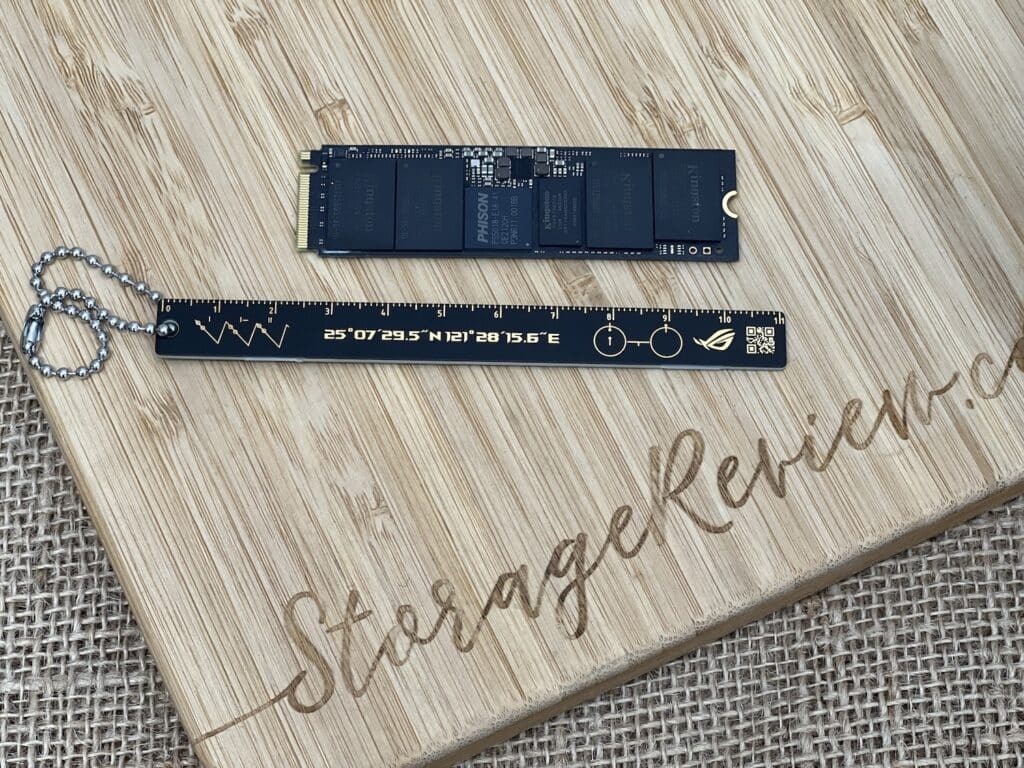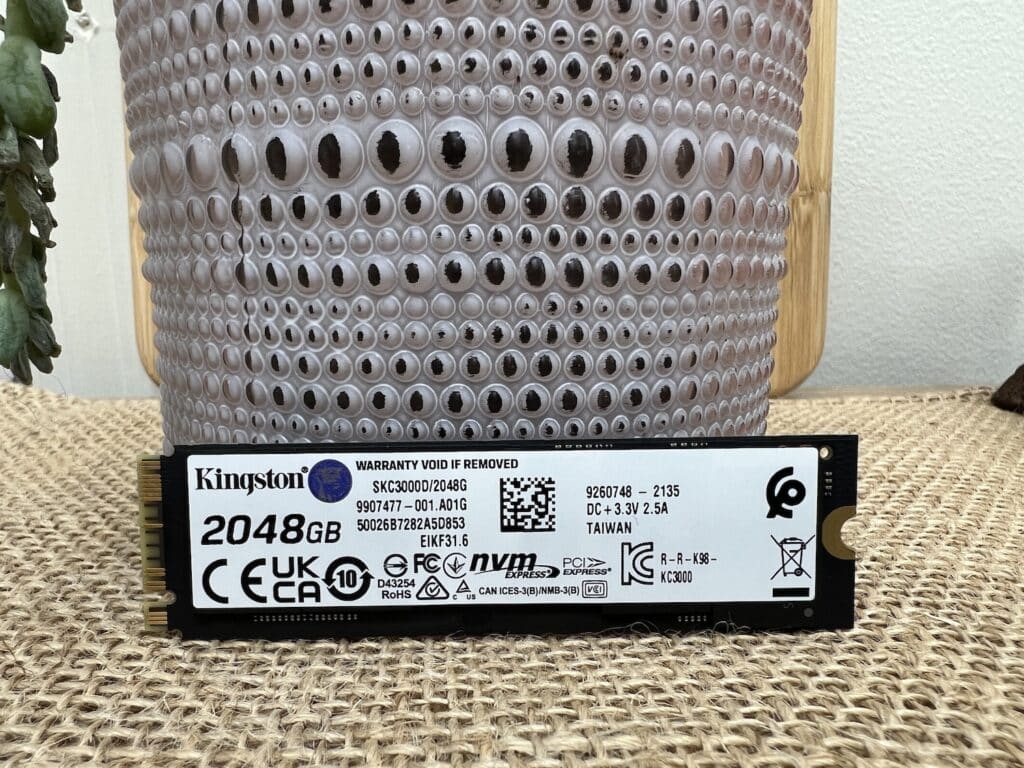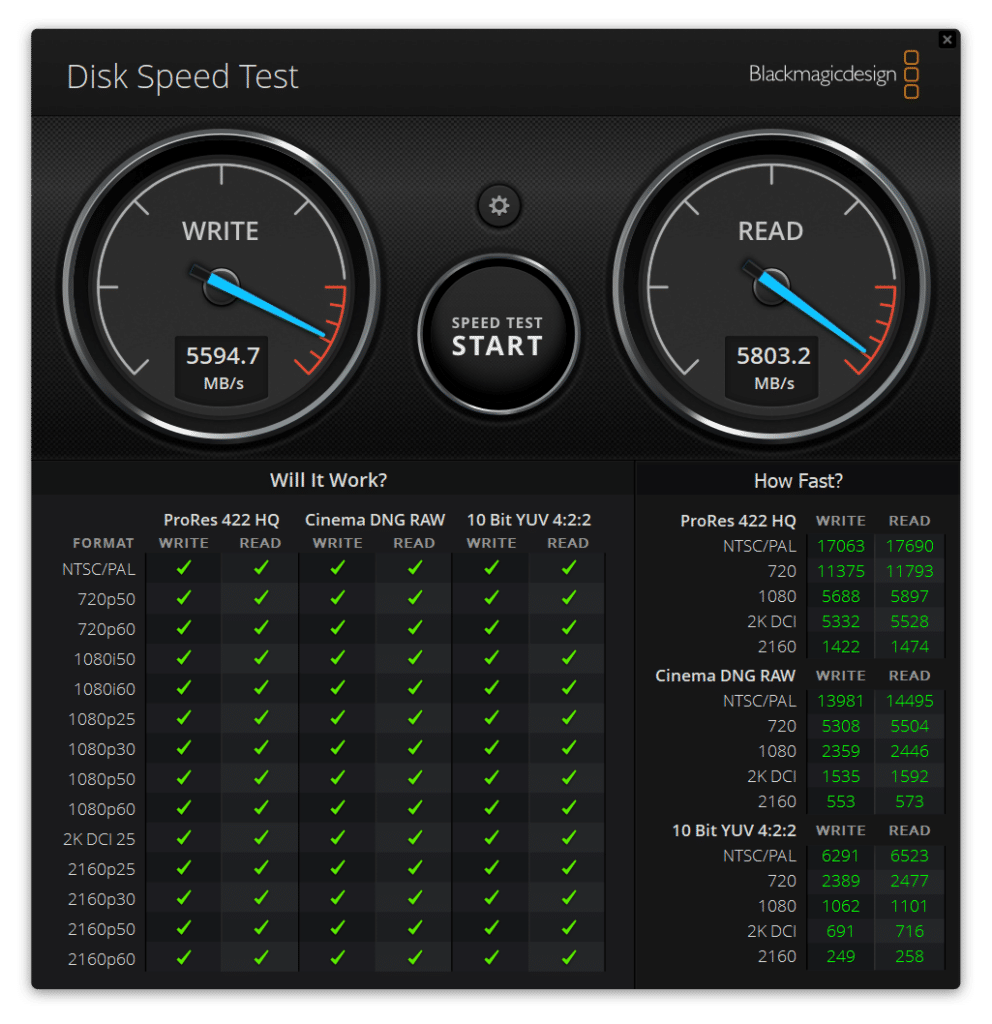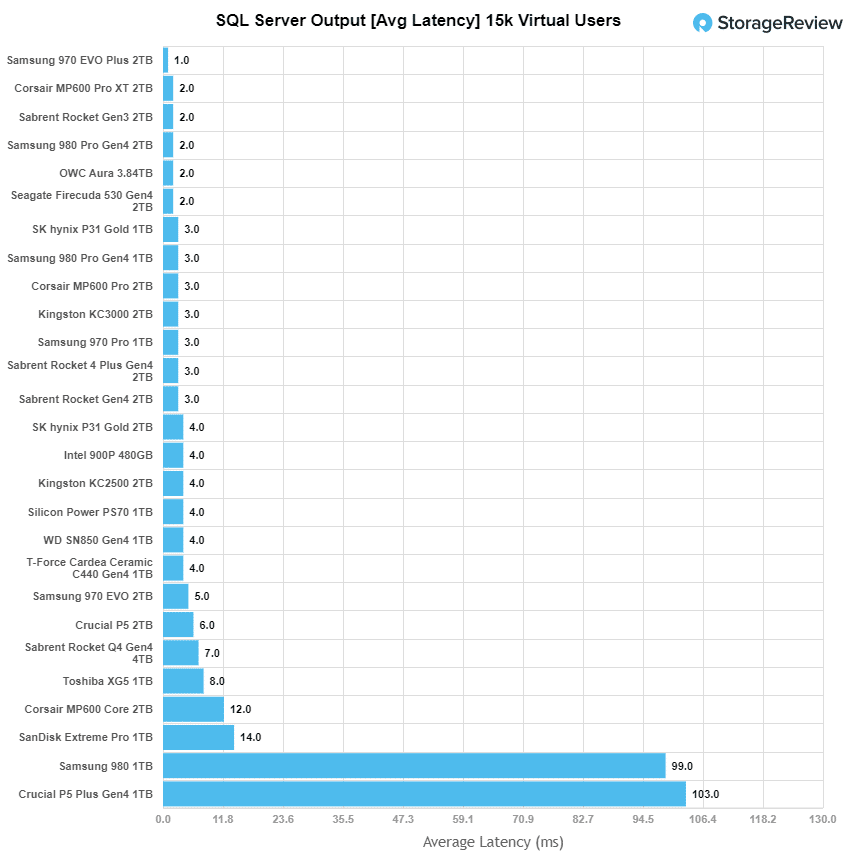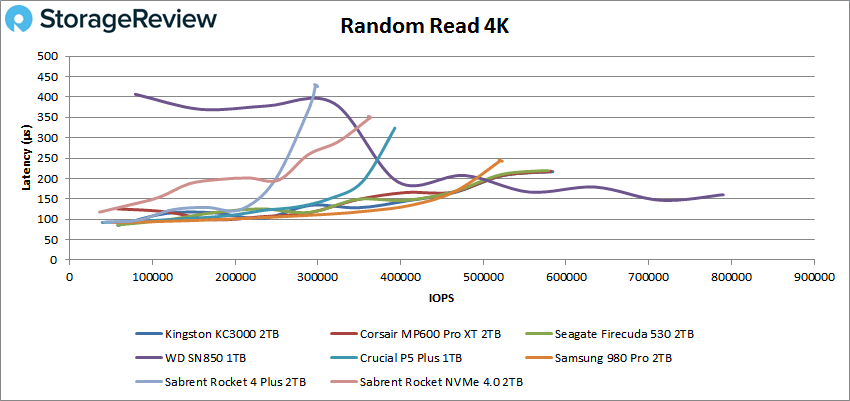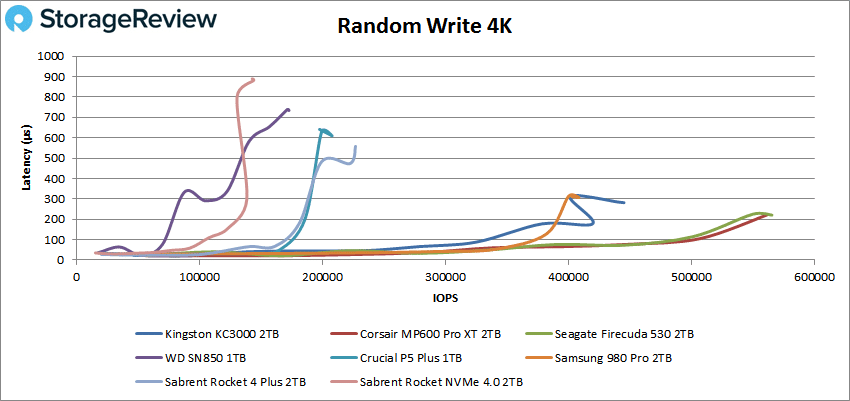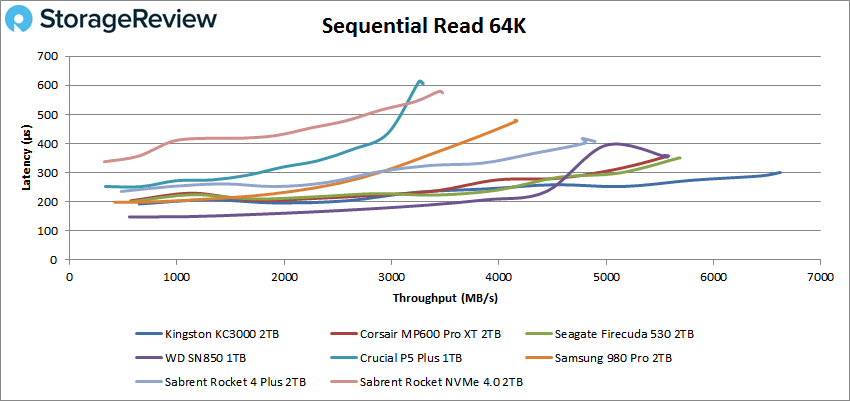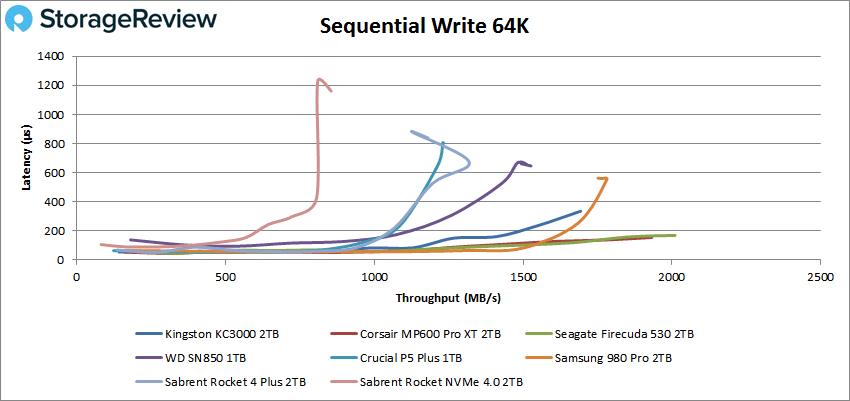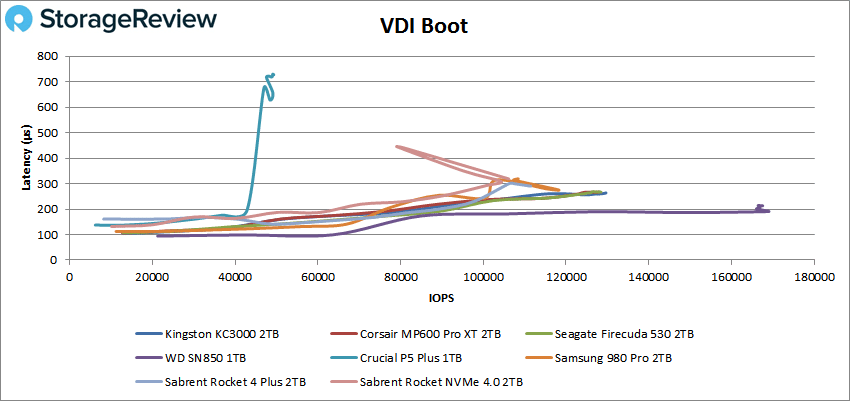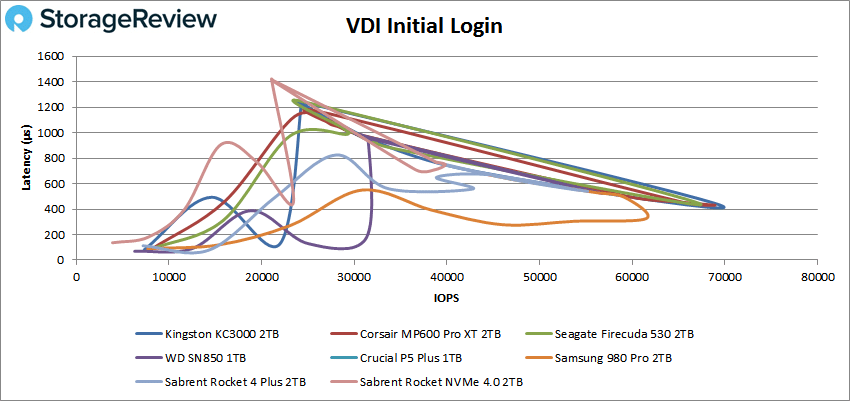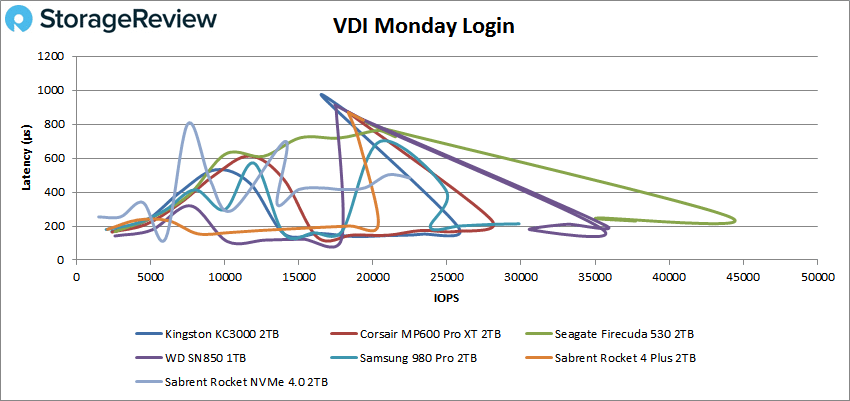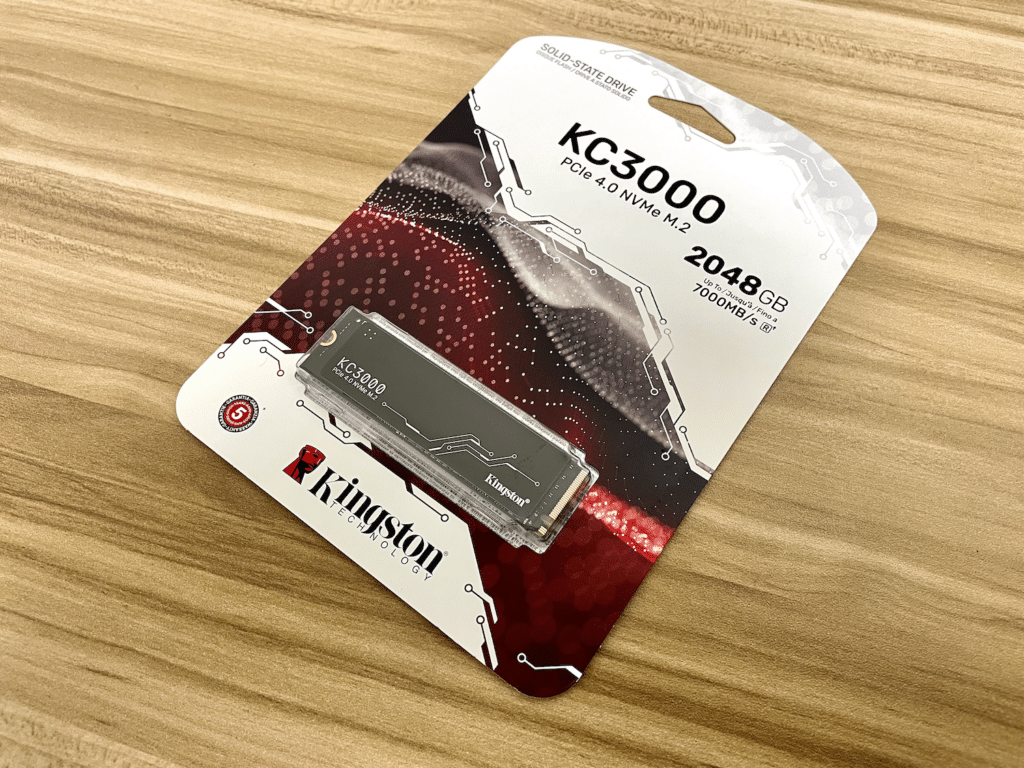The Kingston KC3000 is the company’s latest premium SSD offering available in the industry-standard M.2 2280 form factor and in capacities from 512GB to 4TB. Specifically designed for enthusiasts and power users looking to get the most out of the new NVMe Gen4 interface, Kingston indicates that the KC3000 is best suited for 3D rendering and 4K+ content creation software applications.
The Kingston KC3000 is the company’s latest premium SSD offering available in the industry-standard M.2 2280 form factor and in capacities from 512GB to 4TB. Specifically designed for enthusiasts and power users looking to get the most out of the new NVMe Gen4 interface, Kingston indicates that the KC3000 is best suited for 3D rendering and 4K+ content creation software applications.

The new Kingston offering is also the latest Gen4 SSD to use the effective combination of the Phison PS5018-E18 controller and Micron’s B47R 3D TLC NAND. The E18 leverages the new TSMC 12nm process node (a significant improvement from the previous 28nm), which increases performance by up to 25% over the previous generation. This noticeable difference allows greater power efficiency and lower thermal output. All of the combined means faster potential performance of SSDs. We previously saw the E18 used inside drives like the Seagate FireCuda 530 and Corsair MP600 Pro XT, and expect more of the same impressive numbers in our Kingston KC3000 charts.
Unsurprisingly, Kingston quotes their new KC3000 drive with a pretty impressive performance profile with read and write speeds of 7GB/s and 7GB/s, respectively, for the 2TB and 4TB models. Random 4K performance is quoted to reach up to 1 million IOPS for both reads and writes. These numbers are exactly what the Phison E18 controller indicates it tops out at.
For reliability, the KC3000 has an MTBF of 1,800,000 hours and an endurance rating (total bytes written) of 1.6PBW for the 2TB capacity model. The latter value is noticeably lower than the Seagate Firecuda 530‘s 2.55PBW. It’s higher than Corsair though, which continues this inconsistent endurance spec on E18 SSDs.
The KC3000 sports a nice all-black design that displays the main interface specifications and Kingston branding, while the backside features a sticker with all the usual suspects: drive capacity, certifications, manufacturing information. The drive itself uses a graphene aluminum heat spreader (which is highlighted by its effective thermal conductivity) to help disperse heat while keeping the drive nice and cool during intensive use cases.
Backed by a limited 5-year warranty and free technical support, the Kingston KC3000 is available in 512GB, 1TB, 2TB, and 4TB models. We will be looking at the 2TB model for this review.
Kingson KC3000 PCIe Gen4 SSD Specifications
| Form Factor | M.2 2280 |
| Interface | PCIe 4.0 NVMe |
| Capacities | 512GB, 1,024GB, 2,048GB, 4,096GB |
| Controller | Phison E18 |
| NAND | 3D TLC |
| Performance | |
| Sequential Read/Write | 512GB – 7,000MB/s, 3,900MB/s
1,024GB – 7,000MB/s, 6,000MB/s 2,048GB – 7,000/MB/s, 7,000MB/s 4,096GB – 7,000MB/s, 7,000MB/s |
| Random 4K Read/Write | 512GB – up to 450,000 IOPS, 900,000 IOPS
1,024GB – up to 900,000 IOPS, 1,000,000 IOPS 2,048GB – up to 1,000,000 IOPS, 1,000,000 IOPS 4,096GB – up to 1,000,000 IOPS 1,000,000 IOPS |
| Total Bytes Written (TBW) | 512GB – 400 TB
1,024GB – 800 TB 2,048GB – 1.6 PB 4,096GB – 3.2 PB |
| Power Consumption | 512GB – 5mW Idle / 0.34W Avg / 2.7W (MAX) Read / 4.1W (MAX) Write
1,024GB – 5mW Idle / 0.33W Avg / 2.8W (MAX) Read / 6.3W (MAX) Write 2,048GB – 5mW Idle / 0.36W Avg / 2.8W (MAX) Read / 9.9W (MAX) Write 4,096GB – 5mW Idle / 0.36W Avg / 2.7W (MAX) Read / 10.2W (MAX) Write |
| Temperatures | Storage Temperature: -40°C~85°C
Operating Temperature: 0°C~70°C |
| Dimensions | 512GB – 1,024GB – 80mm x 22mm x 2.21mm
2,048GB – 4,096GB – 80mm x 22mm x 3.5mm |
| Weight | 512GB-1024GB – 7g
2,048GB-4096GB – 9.7g |
| Vibration | Vibration Operating: 2.17G Peak (7-800Hz)
Vibration Non-operating: 20G Peak (20-1000Hz) |
| MTBF | 1,800,000 hours |
| Warranty | Limited 5-year warranty with free technical support |
Kingston KC3000 PCIe Gen4 SSD Performance
BlackMagic
First up is the BlackMagic Disk Speed Test where the Kingston KC3000 recorded an impressive 5.59GB/s read and 5.80GB/s write. Compared to similarly-classed drives, the Samsung 980 Pro 2TB model recorded 5.28GB/s read and 4.34GB/s write, while the XPG GAMMIX S70 was able to reach 4.75GB/s read and 4.92GB/s write. Moreover, the Sabrent Rocket 4 Plus hit 5.3GB/s read and 5.9GB/s write.
SQL Server Performance
Each SQL Server VM is configured with two vDisks: 100GB volume for boot and a 500GB volume for the database and log files. From a system resource perspective, we configured each VM with 16 vCPUs, 64GB of DRAM and leveraged the LSI Logic SAS SCSI controller. While our Sysbench workloads tested previously saturated the platform in both storage I/O and capacity, the SQL test is looking for latency performance.
This test uses SQL Server 2014 running on Windows Server 2012 R2 guest VMs and is stressed by Quest’s Benchmark Factory for Databases. StorageReview’s Microsoft SQL Server OLTP testing protocol employs the current draft of the Transaction Processing Performance Council’s Benchmark C (TPC-C), an online transaction-processing benchmark that simulates the activities found in complex application environments.
The TPC-C benchmark comes closer than synthetic performance benchmarks to gauging the performance strengths and bottlenecks of storage infrastructure in database environments. Each instance of our SQL Server VM for this review uses a 333GB (1,500 scale) SQL Server database and measures the transactional performance and latency under a load of 15,000 virtual users.
SQL Server Testing Configuration (per VM)
- Windows Server 2012 R2
- Storage Footprint: 600GB allocated, 500GB used
- SQL Server 2014
-
- Database Size: 1,500 scale
- Virtual Client Load: 15,000
- RAM Buffer: 48GB
- Database Size: 1,500 scale
- Test Length: 3 hours
- 2.5 hours preconditioning
- 30 minutes sample period
Looking at SQL Server average latency, the new Kingston drive showed a solid average latency of 3ms, which placed it at the upper part of the leaderboard and alongside Samsung’s flagship SSD, the Samsung 980 Pro.
VDBench Workload Analysis
When it comes to benchmarking storage devices, application testing is best, and synthetic testing comes in second place. While not a perfect representation of actual workloads, synthetic tests do help to baseline storage devices with a repeatability factor that makes it easy to do apples-to-apples comparison between competing solutions. These workloads offer a range of different testing profiles ranging from “four corners” tests, common database transfer size tests, to trace captures from different VDI environments.
All of these tests leverage the common vdBench workload generator, with a scripting engine to automate and capture results over a large compute testing cluster. This allows us to repeat the same workloads across a wide range of storage devices, including flash arrays and individual storage devices. Our testing process for these benchmarks fills the entire drive surface with data, then partitions a drive section equal to 5% of the drive capacity to simulate how the drive might respond to application workloads. This is different than full entropy tests which use 100% of the drive and take them into a steady state. As a result, these figures will reflect higher-sustained write speeds.
Profiles:
- 4K Random Read: 100% Read, 128 threads, 0-120% iorate
- 4K Random Write: 100% Write, 64 threads, 0-120% iorate
- 64K Sequential Read: 100% Read, 16 threads, 0-120% iorate
- 64K Sequential Write: 100% Write, 8 threads, 0-120% iorate
- Synthetic Database: SQL and Oracle
- VDI Full Clone and Linked Clone Traces
Comparables
- Samsung 980 Pro
- WD SN850
- Sabrent Rocket 4 Plus
- Sabrent Rocket NVMe 4.0
- Seagate FireCuda 530
- Corsair MP600
- Crucial P5 Plus
First up is our random 4K read. Here, the Kingston KC3000 SSD showed very similar performance as the Seagate Firecuda and the Corsair MP600, narrowly beating the two drives at the end. It peaked at 585,182 IOPS with latency of 216.5µs, which placed it 2nd overall though well back of the WD SN850 drive.
In 4K write, the Kingston drive went on to peak at just over 445,331 IOPS with latency at about 281.7µs. This placed it third, but still well behind the Seagate and Corsair drives, which boasted over 100K IOPS more.
Switching over to sequential workloads, the new Kingston drive performed much better than all the other tested drives peaking at 105,888 IOPS (6.62GB/s) and 301µs latency. Though this didn’t quite make it to its top quoted numbers, it is still one of the fastest consumer drives we’ve seen in sequential reads.
The Kingston KC3000 slowed down some in sequential writes. Here, it had peaks of 27,090 IOPS (or 1.69GB/s) and 336.3µs latency, placing 4th among the test drives.
Next, we switched over to our VDI full clone test. For our boot profile, the Kingston KC3000 SSD peaked at 129,099 IOPS at a latency of 261.5µs. This was good enough for second place, though well behind the first place WD SN850.
VDI FC Initial Login saw all the drives with unstable results. That said, the KC3000 topped out at roughly 70K IOPS at 426.4 µs in latency before taking a severe spike in performance to end the test.
VDI FC Monday Login told a similar story, as the Kingston drive topped out at 25,768 IOPS at 193.1µs before ending at 21,337 IOPS (747µs).
Conclusion
The KC3000 is the newest premium drive offering from Kingston available in capacities of 512GB, 1TB, 2TB, and 4TB, all of which use the Gen4 interface. Its graphene aluminum heat spreader also helps to effectively disperse heat while keeping the drive cool during intense usage, making it a great choice for hardware enthusiasts and prosumers looking.
Though Kingston owns the process of nearly everything in their SSD solutions, (including the design, qualifications, manufacturing, testing, packaging, and even shipping), they are still not a vertically integrated SSD manufacturer. As such, Kingston needs to source and qualify controllers and NAND, combined with internal processes, to deliver a completed SSD. Thankfully, their selection of the Phison E18 and Micron B47R combination allows Kingston to offer a very competitive performance profile with the KC3000. It performs very well in our tests (specifically in sequential reads).
For highlights, the KC3000 was able to hit peak scores of 585,182 IOPS in 4K read, 445,331 IOPS in 4K write, 6.62GB/s in 64K read, and 1.69GB/s in 64K write. In our VDI Full Clone tests, the Kingston topped out at 129,099 IOPS in boot, while Initial Login and Monday Login showed peaks of 70,000 IOPS and 21,337 IOPS.
The Kingston KC3000 wants to be in the conversation with Gen4 SSD leaders like the Samsung 980 Pro, WD SN850, and FireCuda 530. The KC3000 certainly showed that it can compete at that level, as it outpaced the popular Samsung drive in virtually all of our tests, especially its bar-setting setting transfer speeds in sequential reads. All of this combined makes the KC3000 an impressive release from Kingston, and a drive we highly recommend for enthusiasts and content creators.
Engage with StorageReview
Newsletter | YouTube | Podcast iTunes/Spotify | Instagram | Twitter | Facebook | RSS Feed

